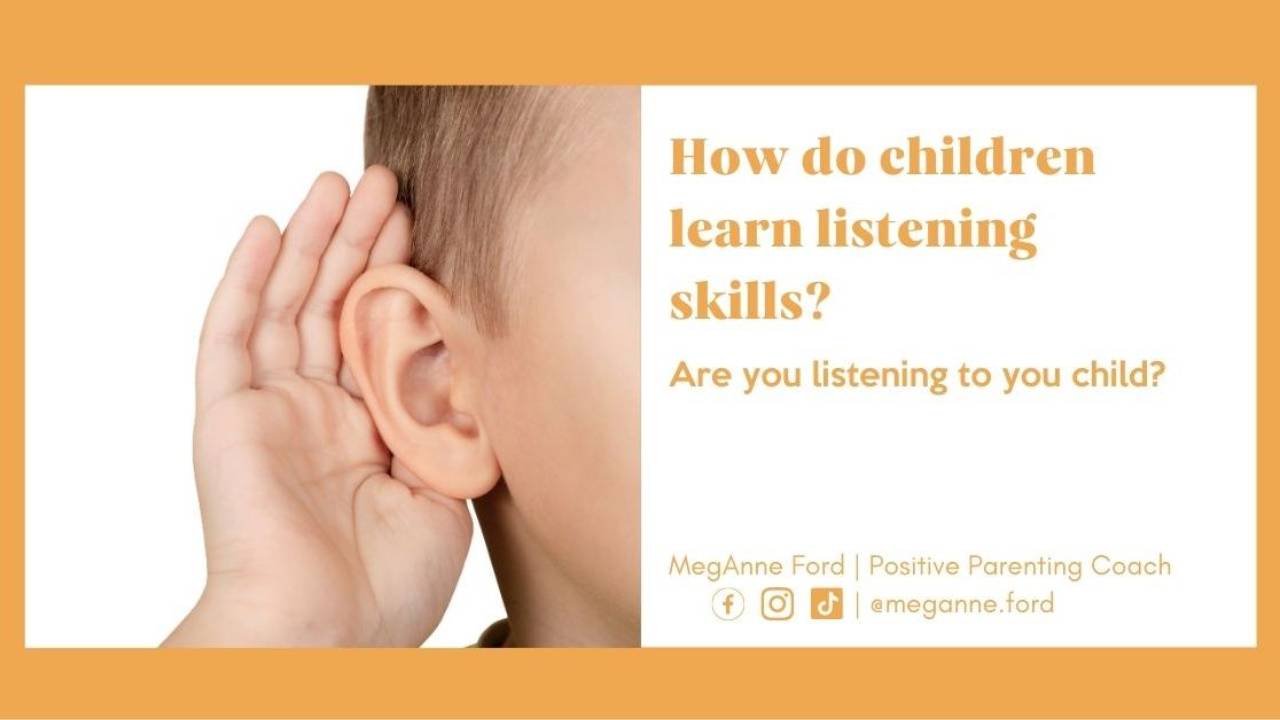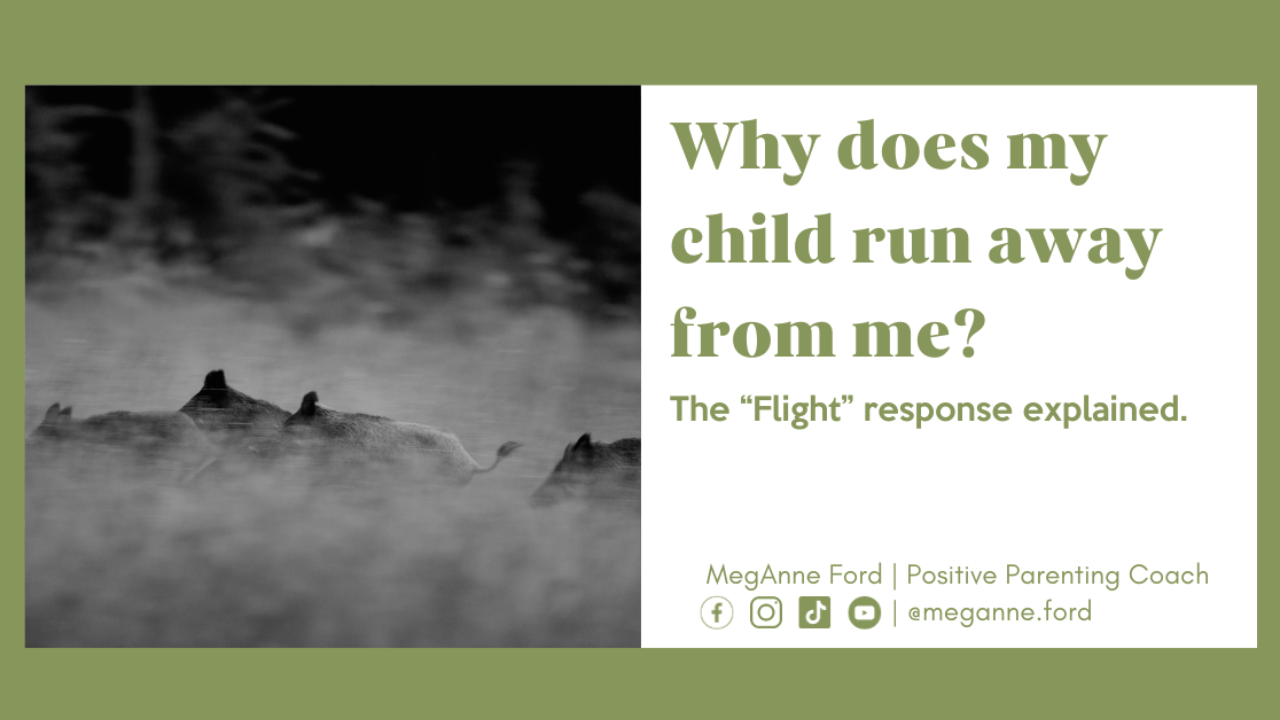
What does the 'FLIGHT' response look like?
Nov 09, 2023
You can WATCH or LISTEN to this content
Disclaimer: I invite you to take care of yourself while you read. This content can be triggering, so take a break if needed. This information is for awareness and entertainment and not to be a substitute for professional mental help.
Takeaways
- Our brains are hardwired for survival, and understanding how they respond to threats is essential for recognizing both adaptive and maladaptive reactions.
- The flight response involves seeking escape from perceived threats and can manifest as various behaviors, like being easily overwhelmed or avoiding situations.
- Shifting from reacting like gasoline in stressful situations to acting as an extinguisher, focusing on empathy and safety, can enhance trust and communication between parents and children.
I am a parenting coach. I work with parents to help them build and maintain parenting tools that work inside their home.
The more we know as adults, the more empowered we can be in stressful situations with the little ones in our care.
Our Nervous System Keeps us Alive
Our brains are designed for survival.
When we sense a threat, our brains work to protect us. They fill in gaps and make assumptions to identify dangers.
These responses can be helpful, but sometimes they misinterpret things.
For example, they might confuse a tiger with a harmless kitty cat when crucial details are unclear, and this can trigger a threat response.
In certain situations, these defenses are necessary, but when we perceive threats that aren't real, our responses become maladaptive.
Our nervous system plays a key role in these responses.
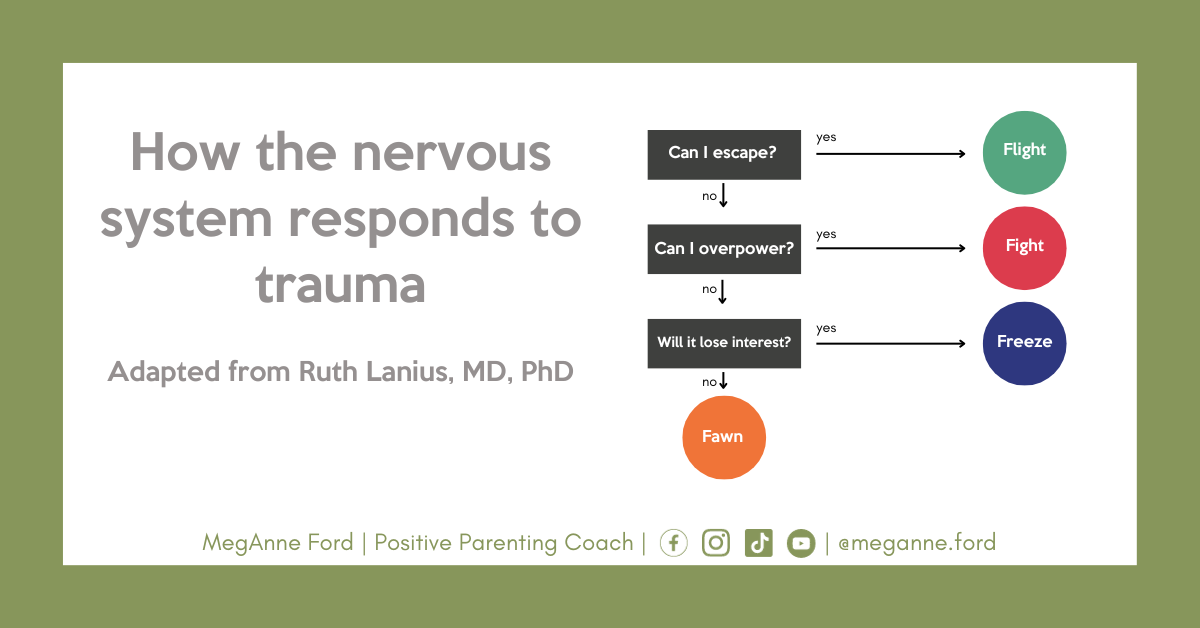
The Flight Response
With the fight, flight, freeze, and fawn responses to trauma, we will focus on what the flight response looks and feels like.
When our brains sense a threat and determine we can escape, we go into flight mode, which means running away.
The non-verbal cues include dilated pupils, heightened hearing, increased heart rate, and mouth breathing. Recognizing these cues can help us understand when someone is in a heightened state due to perceived threats. Our muscles might also become tense in these situations, and all of these responses are automatic and not consciously controlled.
I was watching a video on TikTok featuring a C.L.E.A.R. & Kind Member named Stephanie. She was going through a tough situation with her daughter, but what caught my attention were her hands.
I could tell that even though she was stressed, Stephanie was in a regulated state. She wasn't tensing up; her body seemed relaxed as she navigated the situation.
I also noticed her daughter's body language, which indicated that Stephanie was becoming a safe person for her, even during a challenging moment.
Stephanie mentioned that she could differentiate between picking her daughter up with love and picking her up with anger during their morning routine.
I pointed out that her body communicates this, and she was right to be aware of it.
Stress can cause various physical responses.
Your stomach might flutter, your digestion can slow down, your mind races, and your pain perception decreases because, during stress, you're focused on surviving. Stress hormones like cortisol and adrenaline become active, setting off all these reactions in your body. This is how your body prepares to face a potential threat.
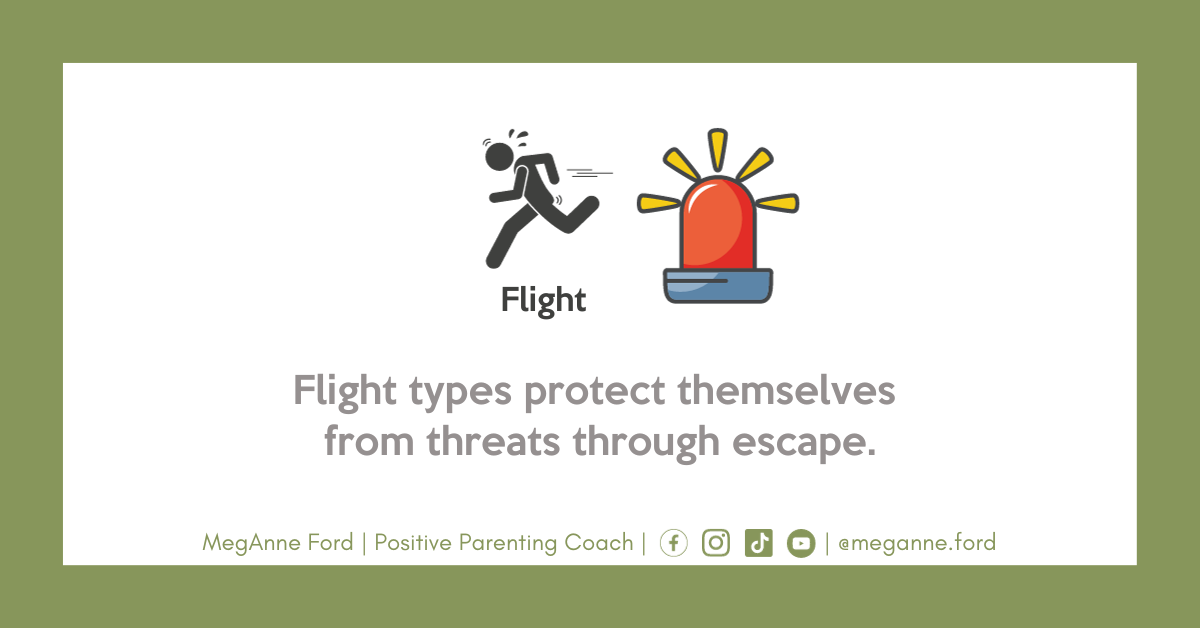
What does Flight feel like?
The fight and flight responses are our body's most known ways to protect us from threats.
Flight is when we decide to escape danger.
Imagine you're driving, and the car in front of you suddenly stops. You either switch lanes or move to the shoulder; that's your flight response, quickly deciding to get away from the threat.
It's like playing tag, where the goal is always to stay on the move, making it harder for others to catch you.
Flight helps us stay alert and ready to escape if needed, but when it's not a real threat, it can make it hard to relax.
For example, when a toddler is at a big family gathering, they might have trouble sitting still and relaxing, as they interpret many things as overwhelming threats.
However, flight can turn maladaptive when it sends us into a panic.
For instance, when you hear footsteps approaching and start feeling anxious or panicky, your flight response is misfiring.
This happens because you might avoid situations you initially agreed to when you interpret them as threats, such as avoiding a plan or a commitment.
Flight is usually a helpful way to escape danger, but sometimes our bodies can overreact, and that's when it becomes maladaptive.
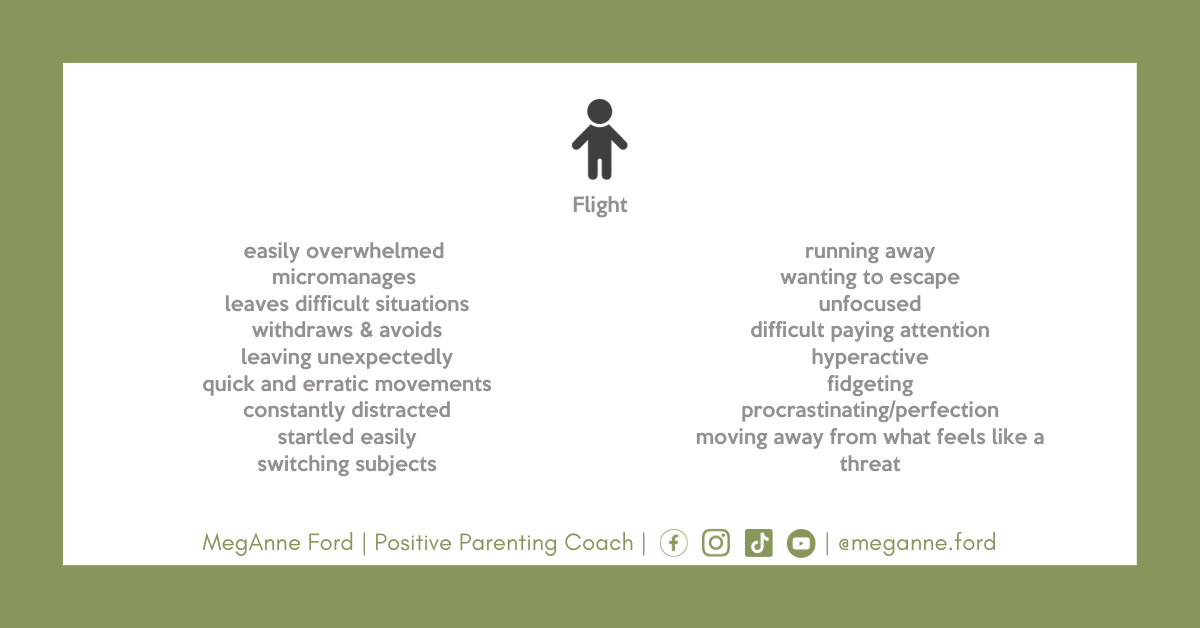
What does the Flight response look like?
A flight response can show up in the way people behave.
It's like their way of saying,
"I'm feeling stressed or overwhelmed."
When someone's in the flight response, they might seem easily overwhelmed and not fully present. They might ask you to write things down for them or seem distracted.
They might even start dropping the ball on things they usually handle because they're interpreting everyday situations as threats.
Flight response behavior can also include micromanaging, where someone tries to control every detail and is always on the move.
When conflict hints at coming, they tend to leave the situation quickly.
Sometimes, we might misunderstand this behavior as rudeness or dismissiveness, but it's often a sign that they're interpreting the situation as too stressful.
Flight can also lead to avoidance, where someone decides not to do things they find challenging, like avoiding activities they once enjoyed.
These behaviors, like quick and erratic movements, constant distraction, and being easily startled, aren't meant to be annoying; they're ways people use to cope with stress and protect themselves.
The Startle reflex, is something we all experience at times.
It's like when something surprises us, and our body reacts without us even thinking.
For example, I would sometimes get startled while doing my hair in the bathroom, like when my husband, Jason, would quietly come up behind me.
He used to think I was doing it on purpose or that I didn't want him around, but it's just an automatic response.
We had to talk about it and work on understanding that it's not personal.
Recently, when he came into the bathroom while I was in the shower, he spoke softly and let me know he was there, which helped me feel more comfortable.
People in the flight response might also change the subject quickly when faced with a difficult situation or a topic they don't like.
It's like they're saying,
"I'm uncomfortable right now, and I want to avoid this."
By switching subjects, they're trying to escape the stress or threat they feel in the conversation.
Sometimes, they might physically run away from the situation, like leaving the room or avoiding a particular place or person. It's their way of protecting themselves when they sense something stressful is happening.
What can I do to help de-escalate?
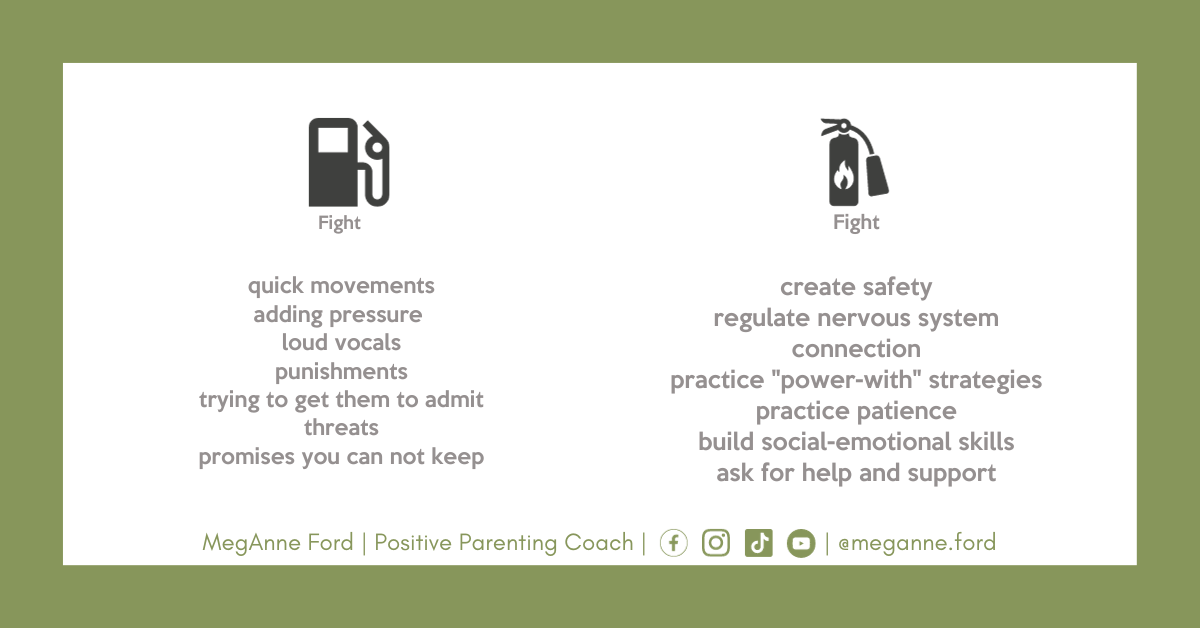
People with the flight response may have a strong desire to escape when they sense a threat or something stressful. They often struggle with staying focused or paying attention, leading to behaviors like being hyperactive, fidgeting, or procrastinating.
On the flip side of procrastination, some may aim for perfection, while others simply avoid situations that feel threatening or overwhelming.
These behaviors are their way of protecting themselves when they feel a threat is approaching.
It's important to remember that when someone displays these behaviors, they're not trying to give others a hard time or do it on purpose.
These responses are automatic, and they are a signal that the person is having a hard time. It's not personal, but it's a way of communicating that they need support and understanding.
In these moments, it's crucial to remain present, attuned, and communicate in ways that build trust, rather than becoming defensive or seeing them as a threat.
When we fail to do our part in supporting them, it can rupture trust and make it harder to connect and communicate effectively.
In challenging situations, instead of reacting like gasoline that fuels the fire, we have the choice to act as extinguishers, calming the flames.
Being gasoline looks like
Quick movements, pressure, loud voices, punishments, and blame.
Being an extinguisher looks like
Choosing a different path to connect and create safety.
When someone displays such behaviors, they're signaling that they don't feel safe.
So our goal shifts from focusing on the issue to creating a sense of safety, helping regulate our nervous systems, leaning into connection, validating the other person's experience without necessarily agreeing or condoning, and showing that we see and hear them.
We can practice these "power with" strategies, which involve getting on the same page, creating agreements, establishing routines, nurturing patience, and building social and emotional skills.
It's an opportunity to acknowledge when we start acting like gasoline and seek help and support to ensure we can respond in ways that benefit both ourselves and our child.
This whole approach revolves around the flight response, which involves avoiding conflict instead of engaging in it.
It emphasizes the importance of taking a step back, seeking external support and resources, and prioritizing a helpful and collaborative approach for both us and our child.
Next Steps
Did any of this information resonate with you? Are you wondering what the next step is? In that case, I encourage you to be the beginner and enroll in The Understanding Us Series, 5 emails that will give you a sense of where you are in your parenting journey.
We were not taught how to be caregivers. This is a way to start to understand.
I invite you to think about the question below:
- When do you notice signs of stress?
- When do you notice signs of safety?
- What habits support your sense of safety?
- What habits support your sense of stress?






